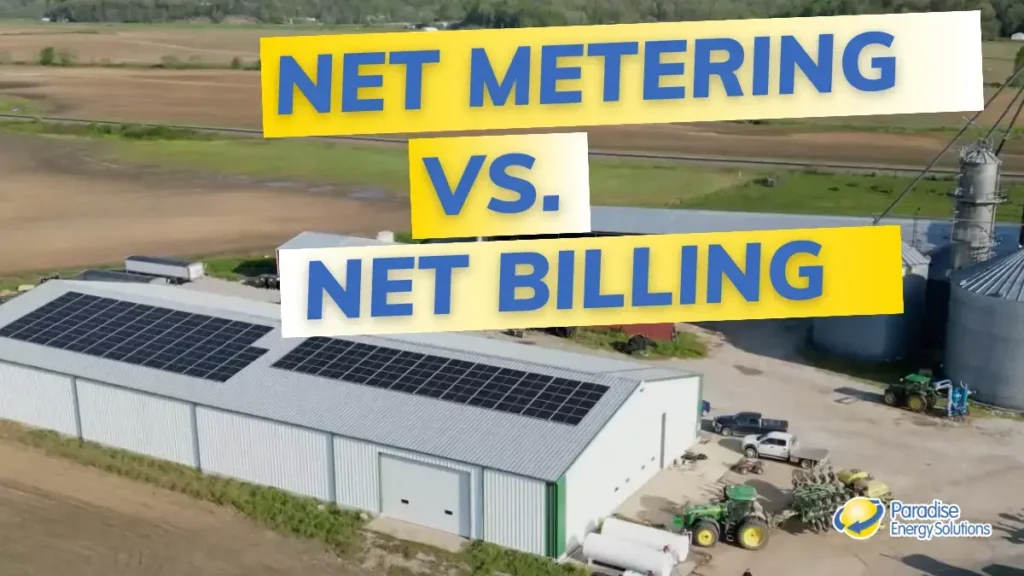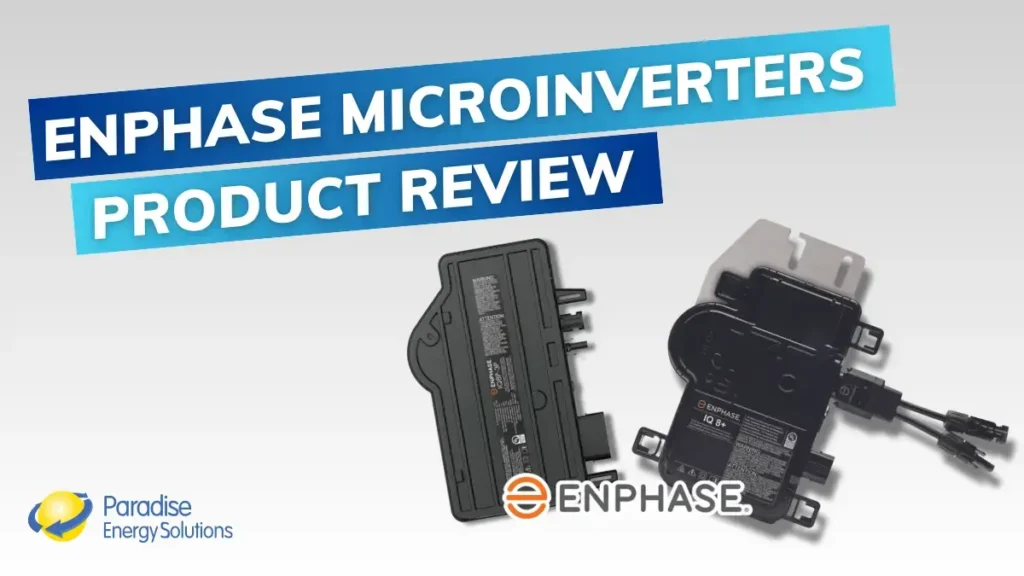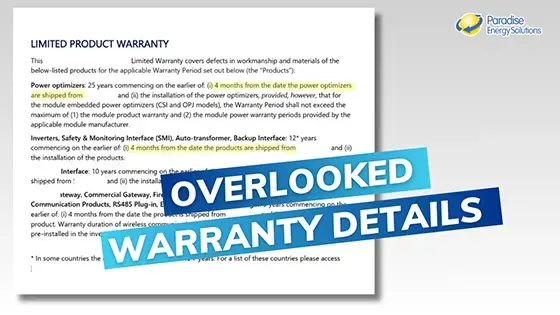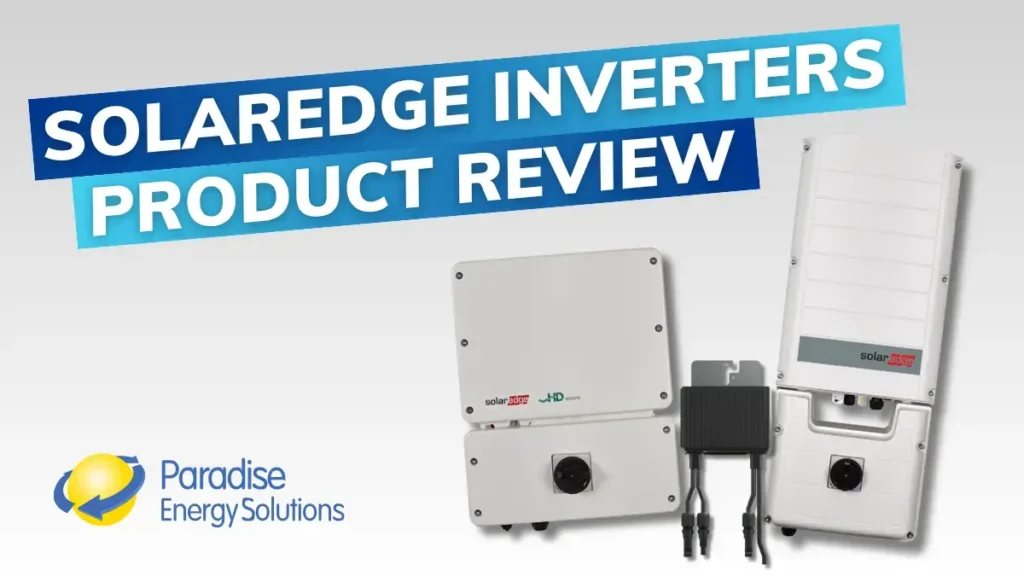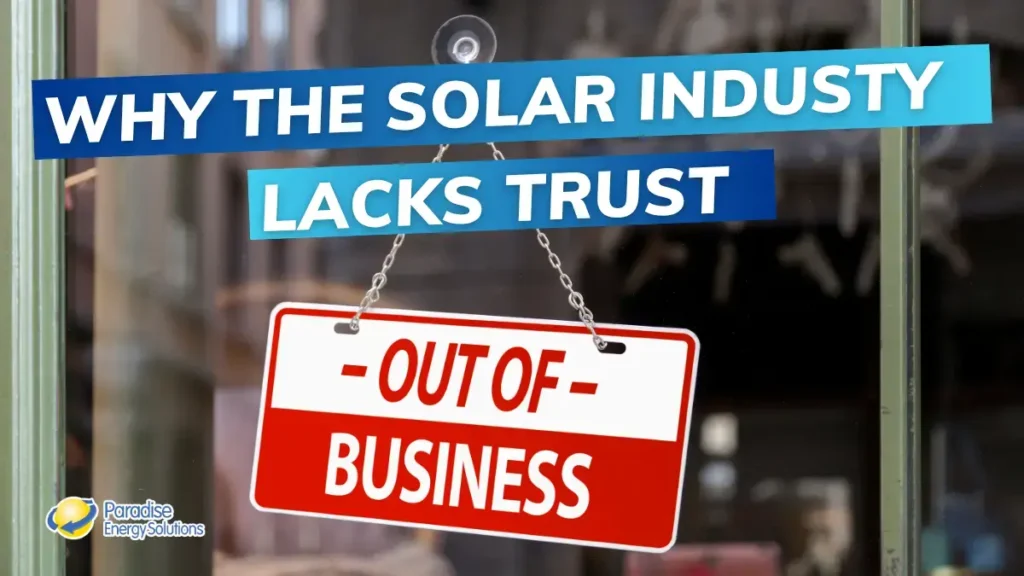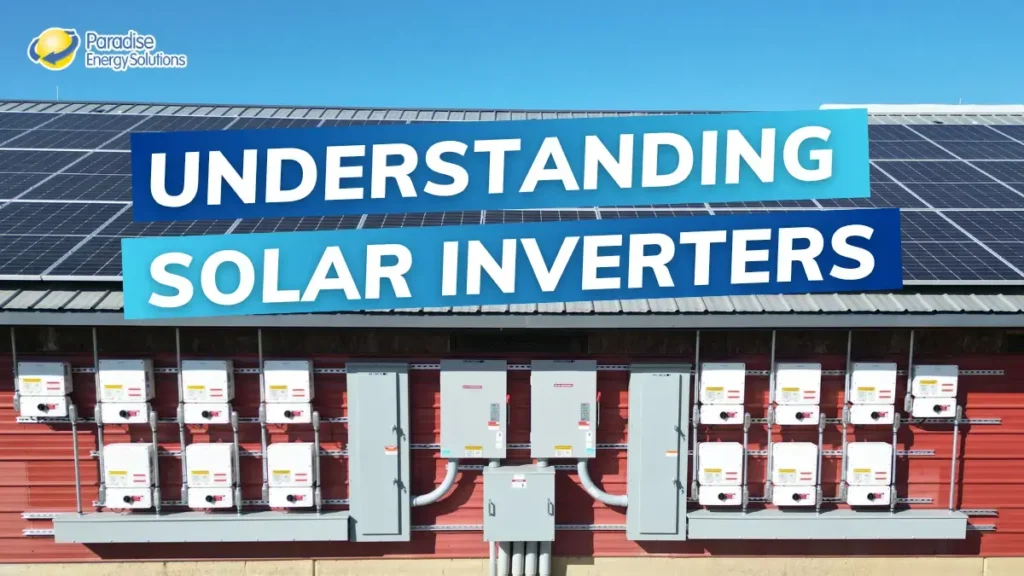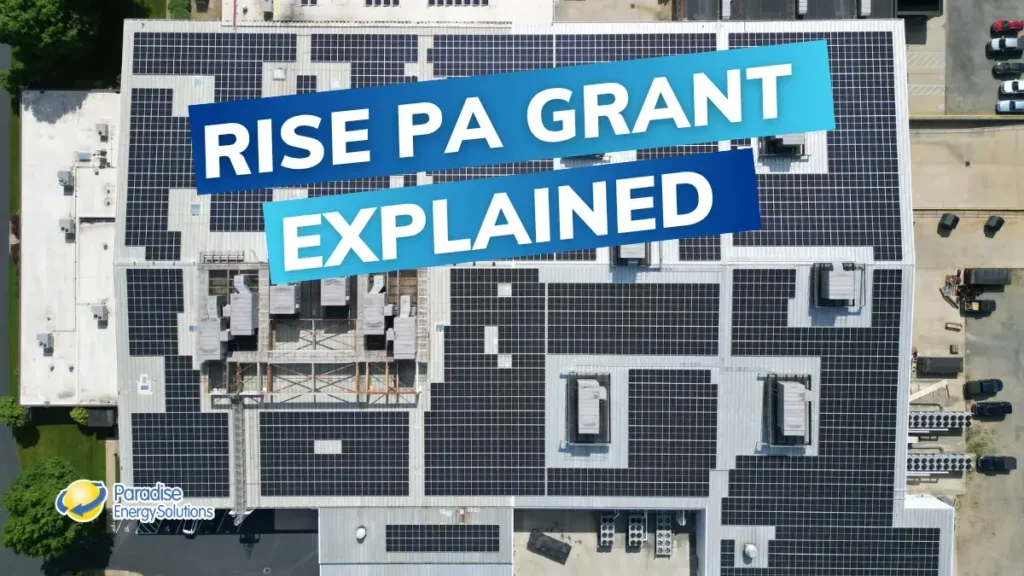Net metering and net billing for solar energy are essential terms to know and understand. They are the methods used to compensate you for the excess energy you push to the utility grid.
This blog will look at what happens to your solar system’s overproduction (the electricity you don’t use) and what both net metering and net billing mean.
What Happens if Your Solar Energy System Overproduces?
Many solar energy systems produce more electricity during the day than a home or business uses at that time. That extra electricity can be used later on when the system isn’t producing, like overnight.
But in the meantime, that excess electricity needs to be stored somewhere. For off-grid systems, it’s stored in large and expensive battery banks. For most grid-tied systems, it’s transferred to the electricity grid. The electric company then sends that energy out to other customers and compensates you through net metering or net billing.
Net Metering vs. Net Billing for Solar
What is Net Metering?
The main difference between these two compensation programs is what you receive for your energy exports. Net metering will compensate you at the retail rate, whereas net billing will compensate you at the lesser supply or wholesale rate.
With net metering, the electricity you upload to the grid is worth the same as the electricity you’d purchase from the grid. You receive one credit for every kilowatt-hour (kWh) you upload to the grid. You can exchange those credits for an equal amount of kWh whenever needed. Or you can bank these credits, roll them over from month to month, and then eventually receive a cash payment for unused credit. This one-for-one switch is great for solar panel owners, as it’s essentially free energy storage.
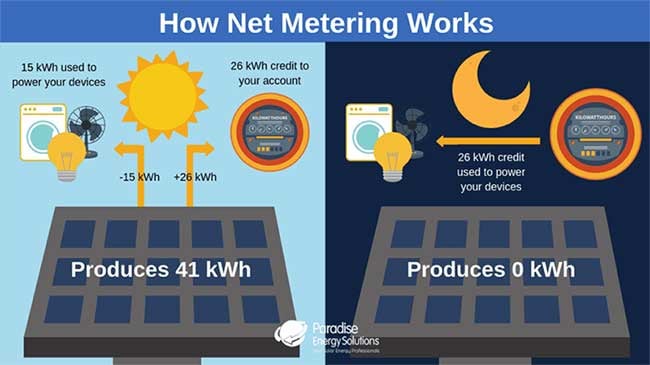
What is Net Billing?
Solar net billing works a little differently. The excess energy generated by your solar system is “sold” to the utility for less than it would cost for you to buy it as a customer. Your solar-generated energy is treated like any large-scale energy producer or power plant selling energy to the grid. Instead of a credit on your utility bill, you will get a dollar value based on the supply rate or wholesale rate of electricity.
If your retail rate is $0.12, your supply or wholesale rate could be around $0.06. That means you’ll have to add $0.06 per kWh to “buy back” your solar-generated electricity uploaded to the grid.
What States Are Net Metering and Net Billing Available?
Whether you’ll see net metering or net billing depends on your state and your utility company. The majority of states mandate that their investor- and public-owned utilities offer net metering to their customers that own solar. These states are orange on the map below. However, these states do not require utility co-ops to provide net metering.
While there are electric co-ops across the country, we often see them in Ohio. For other states in the Mid-Atlantic, the vast majority of systems are installed with access to net metering, with the exception of New York.
In some other areas (the green and purple states on the below map), the states opt for an alternative compensation method that isn’t net metering or net billing. New York’s VDER Value Stack is an example of this.
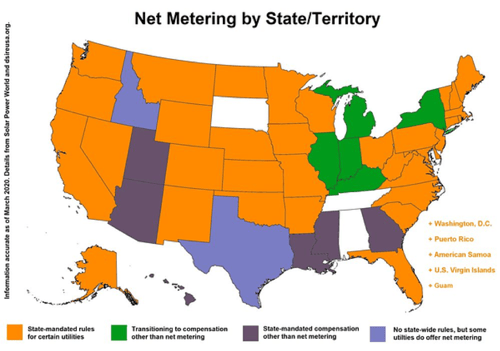
Should I Still Go Solar With Net Billing?
Net billing does make your system’s excess electricity less valuable. This can impact your financial return and the payback length of your solar panel system. However, even in areas with net billing, we’ve installed many solar systems that churn out significant savings for their owners.
To see how much it will affect you, consider if your electricity usage matches solar production. Solar systems produce the most electricity when the sun is high in the sky during the day. If you use a lot of electricity during this same period, you won’t have to push that extra energy out onto the grid. Instead, you can use it immediately as it’s produced, avoiding the devaluation of your energy.
If you use most of your electricity during the evening after the sun goes down, you’ll be pushing most of your solar energy out onto the grid during the daytime. In that case, you will see less of a financial return from solar.
Can I Still Use Solar Energy to Cover 100% of My Usage with Net Billing?
If your local utility compensates solar owners with net billing, you may still be able to offset 100% of your energy usage with solar power. You’ll just have to upsize your solar system to create more electricity—enough to compensate for the difference in cost between the wholesale and retail rates.
It’s worth noting that sizing up a system to meet 100% of your energy usage may not work for your property. And in some cases, it won’t be the best move financially. It all depends on the space you have available and the type of equipment you decide to install. In addition, some states and localities have rules restricting your solar system’s size to 100% of your electricity usage or just over.
This is where working with an experienced solar installer becomes essential. They’ll evaluate your specific situation and present you with various options so you can choose the path best for you.
Which Is Better—Solar Net Metering vs. Net Billing
In just about all cases, net metering is better for solar producers. Your extra solar-generated electricity is worth more, making it easier to provide round-the-clock power to your home or business. With net billing, your solar-generated electricity is sold to the utility at a lower rate, meaning you’ll have to pay a little extra to pull energy from the grid.
All in all, solar can be an excellent investment regardless of which compensation method your utility offers. Experienced solar professionals can help you determine the best path for you given your specific situation, whether that’s to install a system or not.
